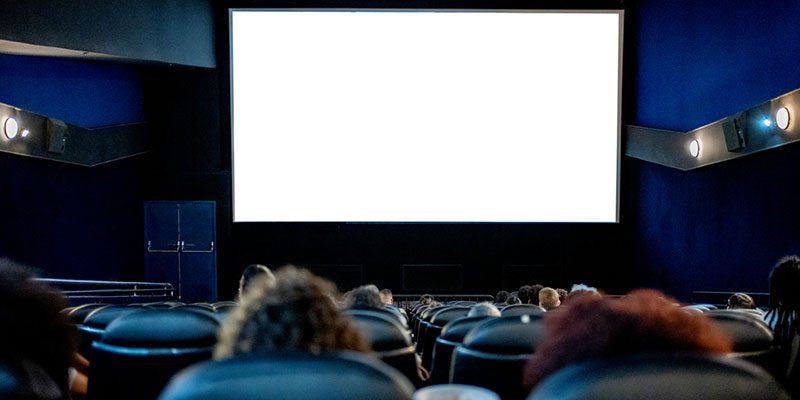Whether you want to create the perfect home movie theater or build a stunning auditorium, you’ll need to choose the right projector screen. Our team at IPS Perforating, Inc. has worked extensively in the entertainment industry, and we can provide high-quality perforated projector screens from industry-leading screen makers to make your next showing a success.

In this article, we’ll explain how perforated projector screens can improve image quality and how they perform compared to non-perforated screens.
- Prevent Unintentional Visual Effects – One way that perforated projector screens improve image quality is by preventing several common visual effects that woven screens can cause. Since woven screens have a regular pattern, they can overlap in distracting ways with patterns within the image itself. For example, if someone in a video is wearing stripes or checks, that pattern can create a distracting third pattern when overlaid on the weave of a fabric screen. The perforations in our perforated screens are deliberately irregular to prevent these effects.
- Increase Brightness – Another way our perforated projector screens improve your image quality is by preventing light loss. Many fabric projector screens allow significant amounts of light from the projector to “leak” through, which causes the projected image to look dim. Our screens are designed to let the image show clear and bright so that everyone in your audience will be able to see it clearly.
- Improve Audio Pairing – Lastly, our perforated projector screens allow you to improve the way the audio pairs with the visuals. The tiny holes in the screen allow sound waves to travel clearly through the material, which in turn allows you to place the speakers behind the screen. With the speakers behind the screen, you can control where the sound is coming from relative to the image. For example, in many cinemas, the sound of a character’s voice is projected from the location of the actor’s mouth on the screen.
